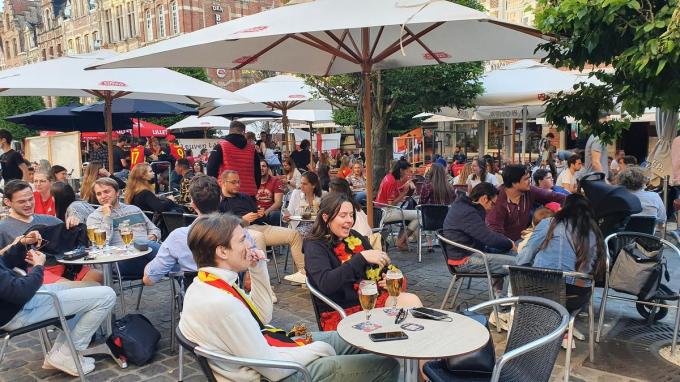After being coloured red for two weeks, Flanders is now turning orange again in the latest update of the coronavirus travel map by the European Centre for Disease Prevention and Control (ECDC).
The fact that Flanders traded its red colour for the less-affected orange means that the coronavirus situation in the region is improving, while Wallonia retains its red colour and the Brussels-Capital Region is still dark red.
According to the most recent figures from Sciensano, Flanders has an incidence rate – the number of new cases per 100,000 inhabitants – below 200, and a positivity rate of 3.8%. Brussels, meanwhile, has more than 550 infections per 100,000 inhabitants.
Updated ? maps are online!
These maps aim to support the @EUCouncil recommendation on travel measures in the EU during #COVID19 pandemic. Color-blind friendly map in the next tweet.https://t.co/CcBVx6B0o5 pic.twitter.com/V09lezJij9 — ECDC (@ECDC_EU) September 16, 2021
Every Thursday, the ECDC publishes a colour-coded map of Europe based on the number of infections and the percentage of positive tests over the last fourteen days, with the ‘safest’ regions coloured green. The most high-risk areas are coloured dark red.
Apart from Flanders, a number of French regions, such as Nord-Pas De Calais-Picardie, Bretagne and Bourgogne-Franche-Comte have now also turned orange.
In central Italy, Tuscany and Le Marche have also turned from red to orange, as has the island of Sardinia.
Portugal is turning completely orange, and its two neighbouring Spanish regions - Extremadura and Galicia - are doing the same. The region of Asturias even regained its green colour.
In the north of Denmark, a hint of green is now visible as well.
Related News
- Brussels university's student-centred ‘Erasmus 2.0’ programme expanded
- Vandenbroucke welcomes Brussels' push for Covid Safe Ticket
- Vaccinated people who test positive will no longer get Covid Safe Ticket
Latvia, however, is worsening, as its colour changed from orange to red. Romania, which was still orange and green a week ago, also turns completely red.
The northeast of Germany also shows more red than it did last week, and the Grand Duchy of Luxembourg goes from orange to red.
The European colour codes are an indication for the EU Member States to impose conditions on returning travellers, such as mandatory testing or quarantine. The colours are also taken into account for the admission of travellers to their own countries.
Member States cannot impose extra restrictions on travellers coming from a green area, but they could demand a negative test and/or quarantine from (unvaccinated) people coming from orange or red zones.
From 31 August, non-vaccinated people aged 12 and over who do not have a recovery certificate must be tested if they return to Belgium from a red zone, on day 1 as well as on day 7 of their return.
All travellers wishing to enter Belgium after more than 48 hours abroad are required to complete the Passenger Locator Form (PLF), regardless of the colour code of the zone they return from.

